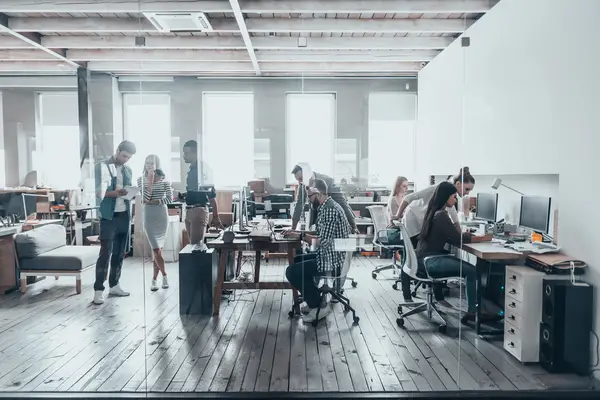
Lost productivity at work can lead to all kinds of problems. Low-quality results, delayed projects, and unsatisfied clients are some of the various issues that can arise. In a team environment, lower than desired productivity levels may also lead to animosity, low workplace morale, and turnover.
To learn how to increase work productivity, everyone needs a game plan that includes actionable, everyday steps. Here is a look at some of those steps.
Avoid Multitasking
Instead of trying to multitask, focus on individual tasks at a time. According to office time management statistics, multitasking is a serious productivity killer. Many people find this piece of advice to run counterintuitive to what they’re used to doing. They believe that by switching between two or three tasks simultaneously, they’ll get more done.
However, the opposite is true. Multitasking can reduce productivity, cause IQ to drop, lead to scattered thinking patterns, and lower emotional intelligence. By focusing on one task at a time, people spend less effort and produce higher-quality results. Multitasking can increase the risk for errors, while zeroing in on single tasks improves concentration.
Fewer errors mean there’s less of a chance someone else will have to go back and fix the work. In addition, it won’t take as long to accomplish two or three tasks. By prioritizing each responsibility accordingly, employees can master tasks correctly and get them done the first time.
Work In Predefined Periods
Another way to increase productivity is to predefine work intervals. These can be as short as 20 minutes or as long as 90 minutes. During these intervals, workers concentrate on the tasks they need to complete. After the interval is up, they can take a short break or incubation period.
Breaking down the workday into shorter intervals helps reduce overwhelm and mental fatigue. It also lowers the chance that someone will invite distractions into their workspace, such as browsing social media or participating in non-work-related discussions with co-workers.
Taking breaks throughout the day can also increase creativity and beat writer’s block. Sometimes stepping away from routine or repetitive tasks can also be like a reboot for the brain. When it’s time to go back to work for another 20 to 90 minutes, increased mental capacity will be there for the home stretch.
Reduce Meetings
Many meetings are unnecessary and a waste of time. For example, it doesn’t make sense to hold a kick-off meeting for a new promotion when the details of that deal aren’t ironed out yet. Employees will end up wondering why the meeting was held in the first place and resent the time they took out of their busy day to attend.
Instead, determine whether a meeting can better serve as an email, a digital conversation within collaboration software, or needs to be postponed. Also, ask whether all employees on the meeting list need to attend at this project stage. Some people don’t need to be brought in until later.
For example, suppose a project manager and marketing director are still hammering out the details of an upcoming initiative. In that case, it might not make sense to have a copywriter and graphic designer in the planning meetings. Wait until the framework is in place and specific content needs are ready.
Prioritize Responsibilities
Each day, employees have multiple things on their plates. They can use the Eisenhower Matrix or tech tools to outline and prioritize those tasks. Prioritizing responsibilities helps workers know which tasks need to be accomplished first, which ones they can delegate, and which responsibilities they can hold off on for a few days. This often requires you to know how to make prioritization decisions.
Prioritization is a way to reduce overwhelm and help accomplish the tasks that matter the most. Without a way to organize and arrange responsibilities according to importance, workers can easily say “forget it” and put things off. With tracking methods and prioritization tools, they can feel like they are getting things done and witnessing their own progress.
Shut Out Interruptions
It may sound cruel, but shutting out potential interruptions is often necessary. Open-office plans are notorious for their distractions and can hamper productivity. Invest in a good pair of noise-canceling headphones or let colleagues know side conversations are not welcome during specific periods of the day.
Employees with separate offices have the luxury of shutting their office doors. Closing a door can signal the need for privacy or uninterrupted work time. Let coworkers know it’s not personal and that interruptions are distracting to getting the job done on time.
Staying on task at work is something a lot of people find difficult. No one wants to feel like they’re working, and mental fatigue can tempt many. It’s easier to surf the web, browse social media, or strike up a conversation with a colleague.
However, all workers and managers are held accountable for their productivity. People need to learn solid techniques like avoiding multitasking and distractions to increase their productivity.
 Business First Family Business, Accounting, Finance, Investing, Marketing And Management
Business First Family Business, Accounting, Finance, Investing, Marketing And Management